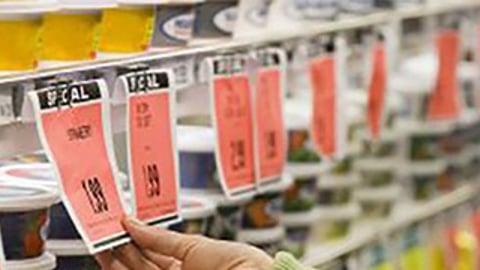How Grocers Use Recovery Audits to Minimize Profit Loss
The nation’s grocery industry is in the midst of an ongoing tidal wave of change and uncertainty as more and more consumers turn to online shopping, including click-and-collect and direct-to-consumer shipping straight to their homes. Grocers are responding by making sweeping changes to accommodate consumers’ shopping needs. It’s no small feat.
And while the ultra-competitive grocery industry sees a volume of $655 billion per year, it continues to be plagued by paper-thin profit margins. In fact, main-aisle margins hover close to 1%.
As grocers look for ways to both satisfy consumer needs and minimize income loss, many are turning to their recovery audit and contract compliance programs to identify and correct points of leakage across their procurement processes.
Plug Profit Leaks, Identify Lost Income
Given significant technological changes, the retail industry’s long-standing practice of driving sales through pricing and promotional tactics is evolving. The types of deals negotiated between grocers and CPG companies are more complicated and difficult to track, particularly when they work together, such as with digital coupons and in-store promotions.
When you consider that U.S. supermarkets carried an average 33,000 items in 2018, and that thousands of those SKUs have their own deals and specials, the complexity only grows. The result? Often, profits fall through the cracks as grocers fail to receive the promotional funding agreed to.
This is where a grocer needs help. A recovery audit program uses artificial intelligence (AI), machine learning and traditional auditor expertise to comb through its data and track goods from the CPG company’s factory to its warehouse, from its warehouse to grocery store shelves, and from the shelves to the register. In doing so, a virtual paper trail is formed that can uncover whether funding was received for a two-for-one deal, for example. If the company hasn’t reimbursed the grocer in accordance with the deal, a recovery audit will identify this as a point of leakage and send a claim to the supplier to honor the commitment – thus ensuring profits aren’t lost.
Ease Friction Between Grocers and Suppliers
The ultimate goal of any recovery audit is to make sure the grocer gets paid fairly in accordance with any agreed-upon contract. Since grocers deal with thousands of suppliers, it’s critical to have efficient, automated ways to maintain quality supplier data, ensure compliance, improve communications and settle disputes. A recovery audit partner can help establish audit guidelines and “rules of the road,” but it’s up to the grocer and its suppliers to adjust or modify those guidelines as they see fit.
That being said, friction between the two is less likely if the recovery audit occurs within a reasonably short time frame – say six months after the transactions occurred. When this audit acceleration is possible, overpayment or underpayment discrepancies can be resolved sooner rather than later. From an industry perspective, both parties benefit: Grocers get their money faster, and suppliers are less frustrated because payment is disbursed, hopefully, within the current year’s funding, or 12 months at the most.
Move Audit Process From Recovery to Preventive
At the end of the day, however, a recovery audit or contract compliance program shouldn’t be reactionary – it should be preventive. As continuous improvements are made to AI and machine learning programs, grocers can identify the root causes of profit loss and prevent them from recurring. After all, moving forward, the complexities grocers deal with likely won’t lessen.
In fact, it’s a safe bet that these complexities will proliferate as grocers continue to apply coupons, incentives and loyalty card deals not only in their brick-and-mortar stores, but also in click-and-collect and other online avenues. Advancements in technology make the seamless identification and correction of errors possible, which reduces, and may one day eliminate, profit leakage.







